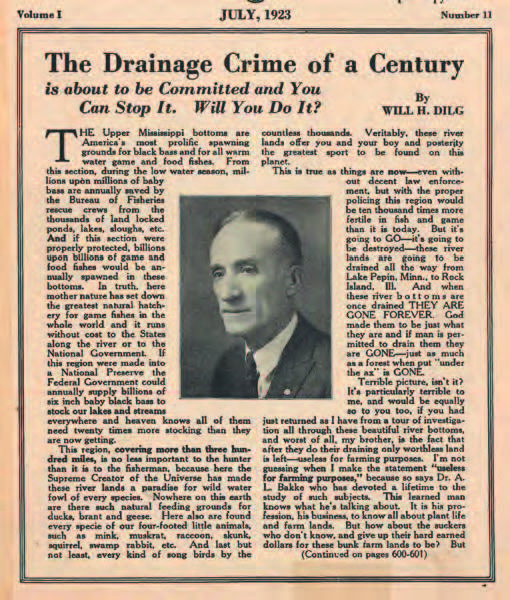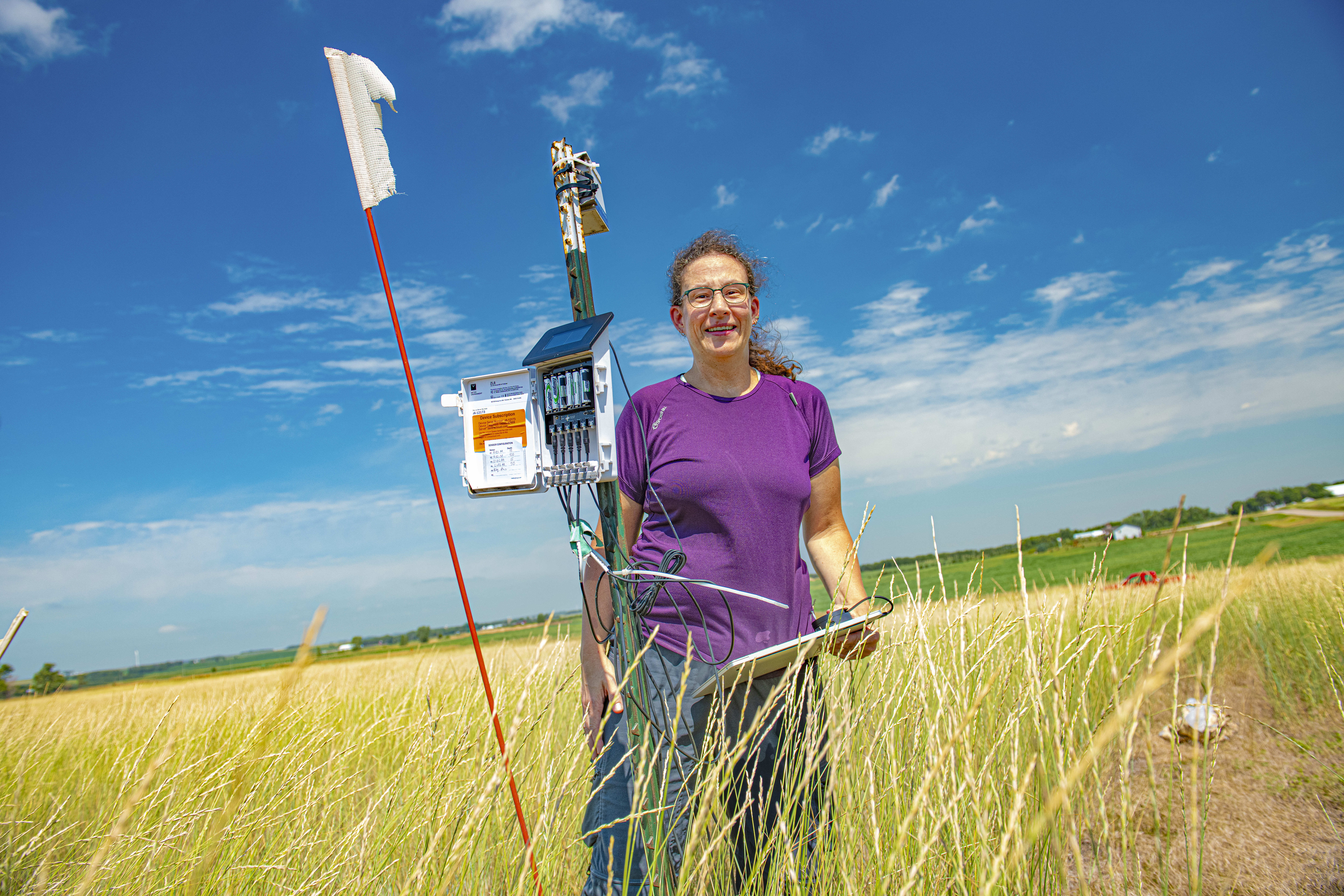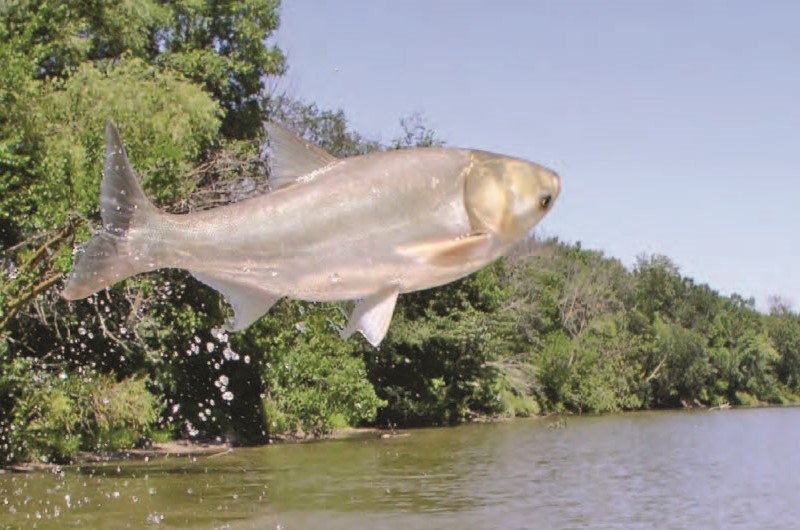For the past year, the Izaak Walton League has been celebrating the 100th anniversary of the first-born “Child of the League” – the Upper Mississippi River National Wildlife and Fish Refuge. Championed by Will Dilg, the League’s first president, the Refuge saved 261 miles of the Mississippi River’s floodplain wetlands between Wabasha, Minnesota and the Quad Cities of Illinois and Iowa. Today, the Refuge preserves more than 250,000 acres and attracts 3.7 million visitors annually.
The Izaak Walton League didn’t simply create a refuge, however; they redefined what it meant to be one. All other refuges before it were considered inviolate sanctuaries, prohibiting most human uses. The new refuge welcomed outdoor recreation including camping, fishing and hunting.
So, what about the next 100 years? If Will Dilg were alive today, what would he be rallying people for and railing against? How would he redefine the world as we know it?
I have to begin with a premise. This landscape today is dramatically different from Dilg’s era 100 years ago. Invasive plants and animals, locks and dams and agricultural runoff comprise the new “normal.” A changing climate is accelerating and shaping the adverse effects of each. Those who manage the river—the U.S. Army Corps of Engineers and the federal and state agencies— have no intention of stepping back and letting this new and different nature loose and uninhibited.
We will have to tend this river as a garden, constantly and indefinitely. And we may be moving from gardeners to gods.
The test before us
In 1986, Congress declared the upper Mississippi a nationally significant navigation system and a nationally significant ecosystem, and it directed federal agencies to manage the river “in recognition of its several purposes.” Never mind that the purposes are, in many ways, at odds with each other. In effect, Congress said divide the pie and serve every interest its piece.
In his book The Organic Machine, Richard White argues that for the Columbia River in the Pacific Northwest, dividing the pie “has not worked and will not work.” He insists that successful salmon runs and hydroelectric dams cannot coexist. The Mississippi is not the Columbia, and engineers, biologists and planners are trying to successfully divide the pie. If they fail, some future generation will have to choose between navigation, agricultural levees, recreation and the environment.
Consequently, a test is looming before us. It is not a college exam or a field experiment. The test is about defining a sustainable future for the upper Mississippi economically, ecologically and socially. It is about building a resilient river.

When Dilg built his campaign to establish the Refuge in the early 20th century, he railed against the forces threatening the upper river’s fish and wildlife. The threats included navigation projects, water pollution and the destruction of entire species. But he railed most against reclamation—building levees to narrow the river and draining the wetlands so the land could be used for agriculture. Those wetlands were essential, nurturing the fish and wildlife on which his love of hunting and fishing depended.
We have addressed many of the problems Dilg attacked. The Refuge has protected the floodplain habitat between Wabasha and the Quad Cities from being drained and farmed. The Clean Water Act and wastewater treatment systems have improved water quality. The Endangered Species Act helps save threatened and endangered plants and animals.
But today, 29 locks and dams constructed by the Corps of Engineers define the river between the Twin Cities and St. Louis. Most came after 1924 when Congress established the Refuge. The locks and dams transformed the free-flowing river into a series of reservoirs or pools, taking away the river’s natural pulse of annually rising and falling.
Wind-driven waves running across the open reservoirs have eaten away many forested islands in the river. The waves stir up sediment in the water that blocks the sunlight needed for aquatic plant growth. Combined with channel constriction projects, the reservoirs eliminated the once vast sandbars and their expansive mussel beds. The pulse of the river flow and its islands, forests and sandbars
comprised the Mississippi’s natural ecosystem that had evolved there over eons.
To meet the 1986 mandate declaring the upper Mississippi a nationally significant ecosystem, the Corps has been working with state and federal partners to offset the negative impacts. Under the Upper Mississippi River Restoration Program, the Corps has been building islands and creating side-channel habitat, restoring geomorphic processes and hydrologic connections.
The projects include dredging sediment from backwaters and restoring the floodplain forest. Federal and state partners are coordinating to temporarily draw down some reservoirs by a few feet to mimic the natural pulse. All these efforts are aimed at passing the test.
Report cards for resiliency
In 2022, the Long Term Resource Management (LTRM) office, which is part of the Upper Mississippi River Restoration Program and run
by the U.S. Geological Survey, released its report covering the years 1993 to 2019. Titled Ecological Status and Trends of the Upper Mississippi and Illinois Rivers, the update provides hope and concern for the upper Mississippi River and the Refuge. Consider it our mid-term grade.
The report covers Pools 4, 8, and 13 (all in the Refuge), Pool 26 above Alton, Illinois, and the undammed river between St. Louis and the mouth of the Ohio River. The LTRM staff have been collecting and analyzing data on water quality, fish and aquatic vegetation in these reaches as indicators of what is happening systemwide.
The most widespread change they found is that the volume of water flowing down the river has increased, with the greatest surges coming in May, June and July when the river should be falling. Maximum, mean and minimum flows have all risen. The number of days the river stays high is growing in most locations. This is due in part to urban development, climate change and agricultural drain tiling, which quickly draws rainwater off of crop lands.
Agriculture is the key arena for action today, and that action could address climate change.
Consider the 2019 flood. While not the record flood in terms of water volume, it destroyed previous records for duration. The Quad Cities remained above major flood stage for 51 days, exceeding the previous record of 31 days. At Dubuque, Iowa, the Mississippi River stayed above flood stage for 85 days, beating the record of 34. The prolonged flooding denied tree roots the oxygen they need to grow, killing thousands of trees in the floodplain forest.
In 2023, the Upper Mississippi River Basin Association issued A 30-year Study of Water Quality in the Upper Mississippi River System. It found that farmers, using best management practices, have lowered the amount of soil and phosphorus running off farm fields. This has led to a decrease in total suspended solids in the water in Pools 4 and 8 and some other pools downstream. Benefitting from increased water clarity, the number and diversity of aquatic plants, including wild rice, has increased in Pools 4 and 8, but, according to the LTRM report, they are scarce below the Refuge, where little floodplain remains.
Phosphorus and nitrogen levels are still above recommended standards. These fertilizers can cause harmful algal blooms in fresh water and the dead zone in the Gulf of Mexico. Phosphorus is decreasing, thanks to better wastewater treatment and modern farming practices, but nitrogen is increasing in Pools 4 and 13 and other reaches downstream. Granted, legacy stores of sediment and nitrogen throughout the watershed are contributing to the volume of each.
Recreational fish abundance is holding steady in Pool 4 and has increased in Pools 8 and 13 but is decreasing in Pool 26 due to invasive silver and bighead carp. Outcompeting our native species, these fish now comprise up to 50 percent of the biomass of Pool 26. And the LTRM report shows that sediment is filling backwater lakes and sloughs in Pools 4 and 8. This means fish are losing spawning areas and deep water habitat in areas away from the main channel.
 Jessica Gutknecht, associate professor at the University of Minnesota, checks a soil moisture sensor at a kernza plot in Edgerton, Minnesota.
Jessica Gutknecht, associate professor at the University of Minnesota, checks a soil moisture sensor at a kernza plot in Edgerton, Minnesota.What would Dilg do?
If alive today, Dilg would have focused, in part, on improving the Mississippi’s water quality and reducing the volume of sediment filling its backwaters. He would have worked to lower the levels of farm fertilizers and chemicals running into the river. So, as he recognized in the 1920s, agriculture is the key arena for action today, and that action could address climate change.
Preventing farm field runoff starts with corn and soybeans. While a variety of practices could help, a year-round land cover with perennial crops would be best. For example, kernza and hazelnuts provide a continuous living cover, greatly reducing erosion and fertilizer runoff.
In the upper Midwest, universities are working with farmers to develop and grow hybrid hazelnuts in hedgerows rather than on trees. Farmers can sow a variety of cover plants between hazelnut hedgerows or trees, such as grasses and nitrogen-fixing clover. While the demand for hazelnuts globally exceeds supply, hybrid hazelnuts are still in the development stage and the processing costs are high.
Kernza is the first commercially available perennial grain crop. Its seed is similar to wheat, but it grows deep roots and can hold otherwise bare soil against heavy rains, and it takes up excess nitrogen. If the wheat-growing states in the upper Midwest shifted some of their land to kernza, they could reduce agricultural runoff.
Another solution is planting crops in with, rather than replacing, corn and soybeans. Called relay cropping or double cropping, implementing this system would let farmers harvest two crops and keep the ground covered throughout the year.
Two leading candidates for relay cropping are winter camelina and domesticated pennycress. As Twin Cities-based Friends of the Mississippi River points out, “These plants are oil-rich and relatively easy to convert to high-demand fuels like renewable diesel and sustainable aviation fuel.” Farmers can sow both in the fall, usually following a small grain like wheat or oats and reap them in the late spring. They could then harvest the soybeans in the fall. Since winter oil seed crops begin growing in the early spring, they protect the soil and take up nitrogen and phosphorus well before corn or soybeans.
In a 2023 report titled “Putting Down Roots,” Friends of the Mississippi River and Ecotone Analytics projected that by 2050, in a moderate adoption scenario, market demand for continual living cover crops “could effectively cut nitrate pollution and soil loss by 23 and 35 percent, respectively” in Minnesota, and could reduce our carbon footprint.
But we have to develop the markets for these crops. Farmers won’t switch until they are profitable. The Minnesota Sustainable Aviation Fuel Hub, led by the Minneapolis Saint Paul Regional Economic Development Partnership, together with Delta Airlines, Ecolab and others, is working to create the needed supply chain markets.
This is becoming especially important with the demand to reduce carbon emissions from the aviation industry. The industry has pledged to achieve net-zero carbon emissions by 2050, largely through sustainable aviation fuels. That means producing three billion gallons in 2030 and 35 billion gallons by 2050.
The shift has already begun. On September 25, 2024, the Minneapolis/St. Paul International Airport saw the first airplane take off using jet fuel mixed with winter camelina-based biofuel grown in Minnesota and North Dakota.
Clearly, federal actions influence what farmers grow. In 2006, federal energy policy mandated the production of ethanol. Since then, corn acreage in Minnesota and North Dakota has doubled. If corn becomes the primary source of aviation biofuel, that acreage will expand, along with soil erosion, nutrient runoff and greenhouse gas emissions.
In contrast, winter oil seeds like camelina and pennycress can lower greenhouse gas emissions “by more than 60 percent compared to petroleum-based jet fuel and is substantially more climate-friendly than other biofuel feedstocks,” according to Friends of the Mississippi River. They would also reduce agricultural runoff.
The Farm Bill offers tools and barriers for the future of agricultural land conservation. Making continuous living cover crops eligible for crop insurance and conservation cost-share programs would help reduce the risks and spur the research. Testing and development are needed to ensure their profitability in the marketplace.
Agriculture, then, can make matters worse or better for the Mississippi River, the Refuge and our climate, depending on which path we choose.
 The silver and other invasive carp threaten the health of the Mississippi and Great Lakes ecosystems.
The silver and other invasive carp threaten the health of the Mississippi and Great Lakes ecosystems.Invasive carp
Given his passion for fishing, Will Dilg would have been railing against the four species of invasive carp advancing up the Mississippi River.
Adult grass carp consume massive amounts of aquatic vegetation, eliminating habitat needed by native fish and waterfowl. They can reach 100 pounds and excrete up to half of what they eat undigested, which degrades water quality. Black carp eat mussels and snails, further eroding the river’s ecosystem. They are still below Lock and Dam 19 at Keokuk, in southeastern Iowa, but they are moving upriver.
Silver and bighead carp are filter feeders that rely on plankton, as do our native filter feeders and most native fish larvae. Adult silver carp can weigh 40 to 70 pounds and gather in schools. When disturbed, they can jump out of the water as high as 10 feet, injuring boaters and damaging boats.
To stop the spread of invasive carp, the Minnesota legislature recently approved a bioaccoustical fish fence or deterrent for Lock and Dam 5 above Winona, Minnesota, and the U.S. Geological Survey and Corps are partnering on a fish deterrent at Lock and Dam 19. These measures, along with targeted removal of invasive carp, could limit their spread until better solutions emerge.
But grass, silver and bighead carp are above Lock and Dam 19 in large numbers. The same three species are at Lock and Dam 5 in growing numbers, and it could take five years to install the new deterrent. So the entire Refuge is in peril unless we act fast.
As I noted earlier, we must tend this river as a garden but are moving from gardeners to gods. Scientists have already decoded the genome of invasive species like the zebra mussel. They can alter the genetic makeup of invasive carp to produce only females. If approved, these tools could eliminate invasive species.
Who will make the decisions about how to employ this technology and where? The hurdles may be more political than scientific.
More than a passing grade
Passing the test of creating a resilient and sustainable Mississippi River is more complicated than in 1924 but no less important. When we reach the 125th Refuge anniversary, what will people be celebrating? Will they be celebrating at all?
Will Dilg and the Izaak Walton League created a movement that burst across the nation in only two years. He emphasized a different use, a different value for the land and water at risk. The objective was clear and the geography defined.
Our efforts to ensure people are celebrating future Refuge anniversaries will take more sustained and persistent efforts, and the problems largely lie outside the river’s mainstem. Still, there are clear targets to aim for in the fields of agriculture and fish management. We have the opportunity to redefine how we conduct both.
Top photo: Upper Mississippi River Restoration Program partners work on backwater habitat rehabilitation in Pool 4 of the Mississippi. Credit: Nicole Ward, Minnesota DNR.